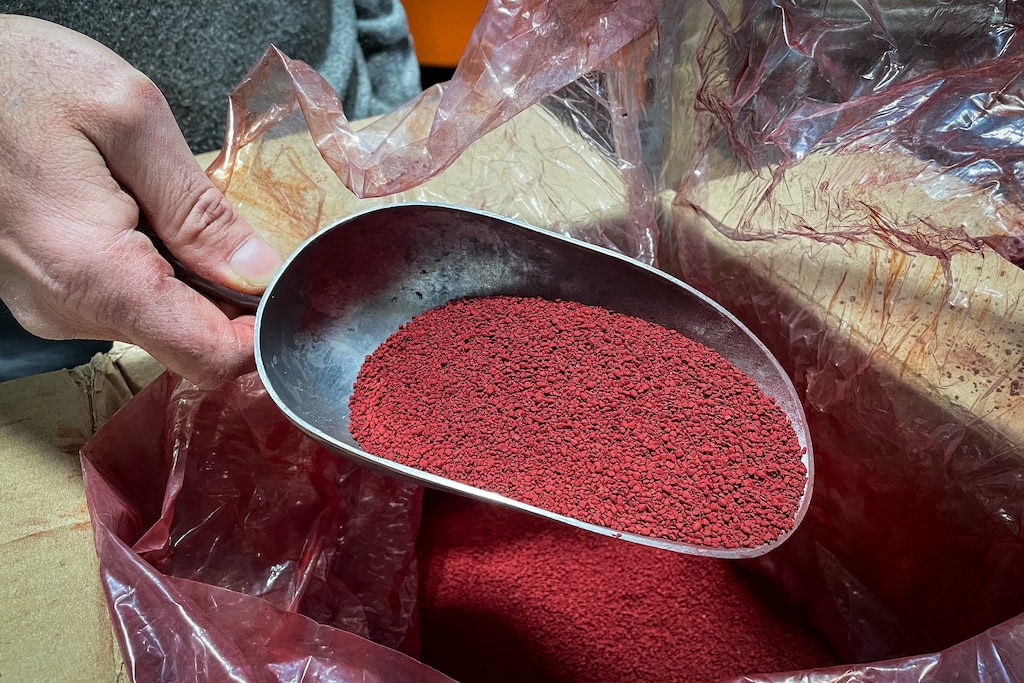Dr. Kelly Johnson-Arbor walked through her local grocery store with her kids recently in search of items made with red dye No. 3. The MedStar Health toxicologist found a few things: strawberry ice cream and frosted animal cookies, some cake mixes and ice cream cones all containing the food coloring that the Food and Drug Administration announced this month would be banned in food and drugs you take by mouth.
Food makers have until January 2027 to find an alternative to the dye, which causes cancer in lab rats when consumed in such high doses that most humans would never eat. (It’s already prohibited in makeup. You can eat it, but you can’t put it on your face.)
Many companies have done away with the product, though. We have California to thank. Johnson-Arbor said the state enacted its own ban on red dye No. 3 two years ago, so it made sense for companies that sell food nationwide to phase it out. “It’s not like companies are only selling food in Maryland,” she said.
Hunt Valley spice firm McCormick & Co. began phasing out the dye even before the ban was announced, according to Kendra A. Ferguson, director of consumer engagement and culture. The business has “very limited use of Red 3 in our branded retail products.”
The Baltimore Banner thanks its sponsors. Become one.
Thad Paul, owner of Koldkiss, the Baltimore snowball syrup maker that got started in 1980, doesn’t have to worry about changing the company recipes.
Read More
When he purchased Koldkiss in 2020, Paul said, a production member told him the transition away from red dye No. 3 took place “decades ago.” Instead, Koldkiss uses red 40 (also called Allura Red AC) to obtain those red-hued flavors such as strawberry cheesecake. “It’s a very concentrated powder or granule that we use for coloring our syrups,” Paul said. It’s also found in Twizzlers, Kool-Aid, Doritos, Skittles and Pepsi.
Koldkiss stores the granules in trash bins in its Morrell Park headquarters, where the company moved a few years ago from its longtime home on South Central Avenue. Standing inside the production facility, Paul used a metal scooper to pick granules from a box. “Don’t touch these,” he warned; the concentrated color will stain your skin.

Although red 40 is safe from the FDA ban for now, that doesn’t mean it’s without issues. The additive can cause allergic reactions in people who are susceptible, and one study linked it to intestinal problems in mice. But, Johnson-Arbor said, “what we know about red 40 is that it’s not linked to cancer.”
One place you won’t usually find either additive? The Charmery. The business, whose factory is in Hampden, doesn’t use artificial food coloring to make its ice cream. Its strawberry ice cream is a pale pink that comes from (gasp) actual fruit. Its mint chocolate chip is not neon green, though customers have sometimes said they wish it was.
The Baltimore Banner thanks its sponsors. Become one.
“Color is not the focus when we’re making ice cream,” owner David Alima said. “It’s more about taste for us.”
Alima isn’t a stickler about artificial dye, though, and The Charmery sometimes adds products that have food coloring to its bases, such as the cereal marshmallows that go in the Saturday Morning Cartoons flavor and the rainbow sprinkles offered as toppings. (Because you can’t not have rainbow sprinkles).
Although our larger food system is chock full of ultra-processed ingredients, Alima said, small local businesses like his tend to be more sensitive to the need to use whole foods.
“I don’t know many companies that use red dye as part of their ingredient list,” he said. He called the FDA’s ban a “step in the right direction,” but “it feels sort of like a Band-Aid to me.”





Comments
Welcome to The Banner's subscriber-only commenting community. Please review our community guidelines.